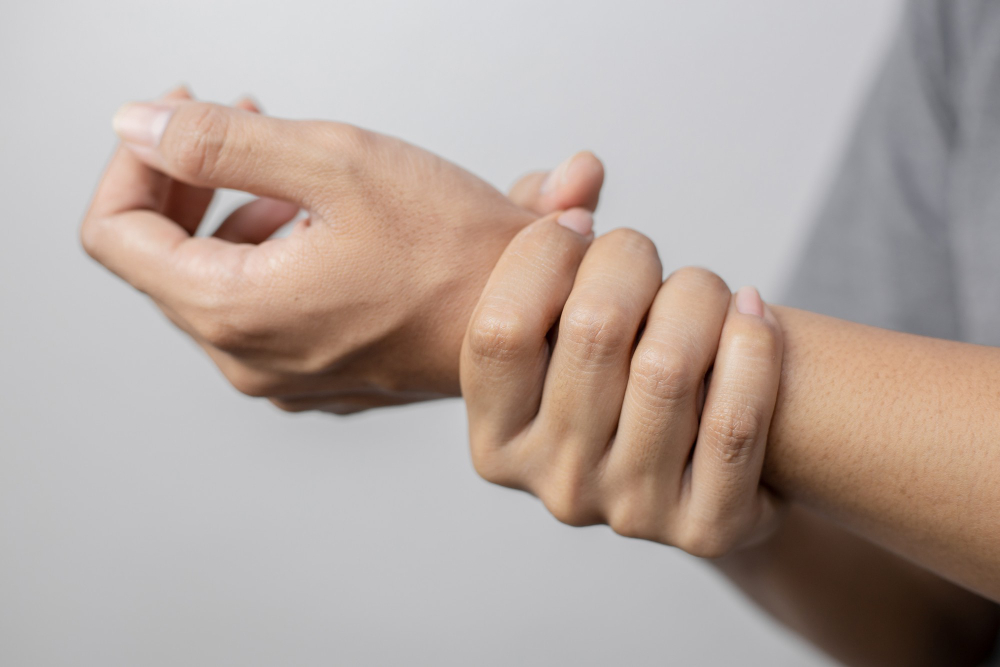
One of the most complex and delicate parts of the human body, our hands and wrists are the engines that drive our daily lives. From the brushstroke of an artist to the keystroke of a coder, the intricacies of our upper extremities are critical. However, these very intricacies also make our hands and wrists susceptible to a variety of injuries. Understanding the common types of injuries and proactive steps to prevent them can help us maintain the function of these irreplaceable body parts.
The Mechanics of the Hand and Wrist
Before one can fathom the variety of possible injuries, understanding the hand's complexity is essential. Comprising 27 bones and a multitude of ligaments, tendons, muscles, and nerves, the hand and wrist boast an intricate network designed for an unparalleled range of motion and dexterity. The wrist alone is made up of 8 carpal bones, connecting the lower arm to the hand. A misstep or overuse of these intricate structures can lead to pain or immobilization that hinders everyday activities.
The Most Common Hand and Wrist Injuries
Sprains and Strains
Sprains and strains often occur as a result of sudden impacts, falls, or overextension of the joints. Wrist sprains can range from mild to severe, affecting the ligaments that connect the wrist bones.
Fractures
Broken bones in the hand and wrist are common and often require immediate medical attention. A fracture can occur from trauma like a fall or a direct blow to the hand.
Carpal Tunnel Syndrome
Carpal tunnel syndrome is a condition that causes numbness, tingling, and other symptoms in the hand and arm. It occurs when the median nerve, which runs from the forearm into the palm of the hand, becomes pressed or squeezed at the wrist.
Tendinitis
Tendinitis is an inflammation of the tendons, the fibrous cords that attach muscles to bones. It can cause pain in the hand or wrist and make everyday tasks difficult.
Arthritis
Arthritis can affect the hands and wrists, leading to joint pain, stiffness, and a reduced range of motion. Osteoarthritis is the most common form of arthritis affecting the hand and wrist and is often associated with aging.
Injury Prevention: Key Strategies for Hand and Wrist Health
Maintain a Healthy Lifestyle
Eating a balanced diet and getting regular exercise can help keep your joints healthy. Exercise, particularly strength and flexibility training, can help support the hands and wrists. Activities like yoga can be particularly effective in keeping the wrist joint flexible and improving grip strength.
Proper Work Techniques
Whether you're typing on a computer or performing heavy lifting, ensuring that your workspace is set up ergonomically can significantly reduce strain on your wrists and hands. Use equipment that is appropriate for the task and maintain a neutral wrist position during activities to minimize the risk of injury.
Protect Your Hands
If you participate in activities that put your hands or wrists at risk, such as contact sports or heavy manual labor, use appropriate protective equipment. Wearing wrist guards, gloves, or using hand wraps can help prevent injuries during these activities.
Take Breaks and Vary Your Activities
Repetitive motion can put strain on the hands and wrists. If possible, take regular breaks to rest and stretch your hands and wrists. Additionally, vary your activities to give your hands a break from repetitive tasks.
Listen to Your Body
Pain is your body's way of telling you that something is wrong. If you experience persistent pain or discomfort in your hands or wrists, it's important to listen and take a break. Ignoring the warning signs can lead to more serious injuries over time.
Seeking Treatment for Hand and Wrist Injuries
When prevention isn't enough, timely treatment can be the key to recovery. From splints and physical therapy to more invasive procedures, there are various treatment options available for hand and wrist injuries, depending on the severity and nature of the injury.
Consulting with an orthopedic surgeon in Lake Mary, FL specialized in hand and wrist injuries can help you understand your options and make an informed decision about your care. If you're experiencing pain or have recently suffered an injury, don't delay seeking the attention of a qualified medical professional. They can provide an accurate diagnosis and recommend the right course of treatment to help you heal and regain full use of your hands and wrists.
The hands and wrists are essential to our everyday lives. By understanding their structure and the risks that may lead to injury, we can take proactive steps to prevent them. Furthermore, knowing when to seek treatment can ensure that you receive the care you need to heal properly. Maintaining hand and wrist health is not just about preventing pain or injury; it's about empowering ourselves to continue doing the things we love for years to come. If you're looking for an orthopedic surgeon in Lake Mary, FL, contact Central Florida Bone & Joint Institute today for more information.